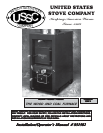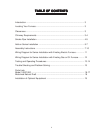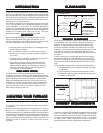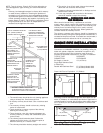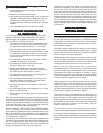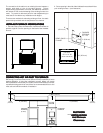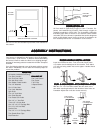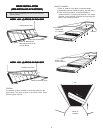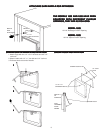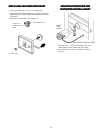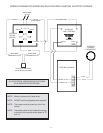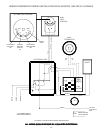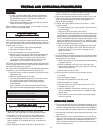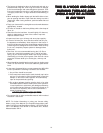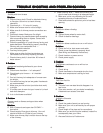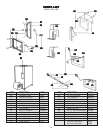
INTRODUCTIONINTRODUCTION
INTRODUCTIONINTRODUCTION
INTRODUCTION
Thank you for your purchase of a U.S. Stove Woodburning
furnace. Your decision to buy a Hotblast Furnace was undoubt-
edly reached after much careful thought and consideration. We
are very proud you chose the U.S. Stove furnace and trust you
will receive the comfort and economy that others realize when
heating with a U.S. Stove product.
Your dealer is important in your experience with the Furnace not
only in your purchase, but in his recommendations for profes-
sional installation in your home. The qualified professional
installer (as recommended by your dealer) has been expertly
trained in solid-fuel furnace installation to assure the safety and
comfort for your family while saving you money. Trust your
experienced installer. He is a specialist in his field.
IMPORTANTIMPORTANT
IMPORTANTIMPORTANT
IMPORTANT
Before installing and using your Hotblast Furnace, please
read the following pages thoroughly and carefully. If you
follow the instructions, your Hotblast furnace will give you safe
and more dependable service in the years to come.
! First step; check your local codes. This installation must
comply with their rulings.
! Do not install this furnace in a mobile home or trailer.
! Always have a smoke or ionization detector installed in
your home.
! To prevent injury or damage, do not allow anyone who is
unfamiliar with the furnace to operate it.
! Spend some time with your furnace to become well
acquainted with different settings and how each will
affect its burning patterns. It is impossible to state just
how each setting will affect your furnace because of
the variations in each installation.
DISCLAIMER NOTICEDISCLAIMER NOTICE
DISCLAIMER NOTICEDISCLAIMER NOTICE
DISCLAIMER NOTICE
The BTU ranges and heating capacity specifications are
provided as a guide only and in no way guarantee the output
or capacity of the units. The actual BTU output depends on the
type of fuel being burned and its conditions, the thermostat
setting, the draft adjustment and the chimney that the unit is
hooked up to. The actual area that the unit will heat depends
on factors such as the conditions of the building, heat loss,
type of construction, amount of insulation, type of air move-
ment, and the location of the unit.
LOCATING YOUR FURNACELOCATING YOUR FURNACE
LOCATING YOUR FURNACELOCATING YOUR FURNACE
LOCATING YOUR FURNACE
The furnace is to be installed maintaining clearances as shown
in illustration.
Do not place the furnace directly on a combustible floor. If you're
placing it on a combustible floor, an approved fire retardant
material equivalent to 3/8" asbestos millboard should be placed
under the furnace. The material must extend at least 16" (40.64cm)
in front of and 8" (20.32cm) on either side of the fuel-loading and
ash-removal doors, and underneath the chimney connector and
extending at least 2" (5.05cm) on either side of the chimney
connector.
CLEARANCESCLEARANCES
CLEARANCESCLEARANCES
CLEARANCES
REDUCED CLEARANCESREDUCED CLEARANCES
REDUCED CLEARANCESREDUCED CLEARANCES
REDUCED CLEARANCES
NFPA guidelines and most codes permit reduced clearances
to combustible walls and ceilings if adequate protection is
added. A common mistake is to assume that sheet metal,
masonry, or asbestos board placed directly against a wall
protects it. Materials installed in this manner give very little
protection. These materials are good heat conductors, so they
will be almost as hot on their back side as they are on the
exposed side. Therefore, the combustible wall behind is still a
fire hazard.
A wall can be kept cool using these items but only if they're
mounted and spaced out from the wall by an inch or two to
allow free circulation of room air behind the protective panel.
The protective panel should start within a few inches of floor
level.
The three rules to follow when constructing wall protectors:
1.Non-combustibility of all materials including mounting
or supporting.
2.A well ventilated air space between protector or wall.
3.Sufficient strength and rigidity so that the protector and
air space will be durable.
CHIMNEY REQUIREMENTSCHIMNEY REQUIREMENTS
CHIMNEY REQUIREMENTSCHIMNEY REQUIREMENTS
CHIMNEY REQUIREMENTS
A masonry or Class A All-Fuel Metal Insulated Chimney must be
used in all airtight wood furnace installations. The minimum
recommended flue size for the U.S. Stove Hotblast Furnace is 6"
(15.24cm) (inside diameter) for round flues, and 7" x 7" (17.78cm)
for square flues. When making new chimney installations,
always follow the chimney manufacturers instructions.
CAUTION: Do not
store combustible or
flammable material
near furnace.
MINIMUMMINIMUM
MINIMUMMINIMUM
MINIMUM
CLEARANCE TOCLEARANCE TO
CLEARANCE TOCLEARANCE TO
CLEARANCE TO
FLAMMABLE WALLSFLAMMABLE WALLS
FLAMMABLE WALLSFLAMMABLE WALLS
FLAMMABLE WALLS
(TOP VIEW)
FLAMMABLE WALL
FLUE
MODEL
1600 - 12"(30.48cm)
1800 - 8"(20.32cm)
MODEL
1600 - 22"(55.88cm)
1800 - 19"(48.26cm)
MODEL 1600 - 20"(50.8cm)
MODEL 1800 - 25"(63.5cm)
MODEL 1600 - 15"(38.1cm)
MODEL 1800 - 18"(45.72cm)
3
CONSTRUCTINGCONSTRUCTING
CONSTRUCTINGCONSTRUCTING
CONSTRUCTING
NON-FLAMMABLENON-FLAMMABLE
NON-FLAMMABLENON-FLAMMABLE
NON-FLAMMABLE
WALLSWALLS
WALLSWALLS
WALLS
PROTECTIVE COVERING
AND ALL SUPPORTS MUST
BE NON-COMBUSTIBLE.
1" AIR SPACE
2" FROM FLOOR
2" FROM CEILING



